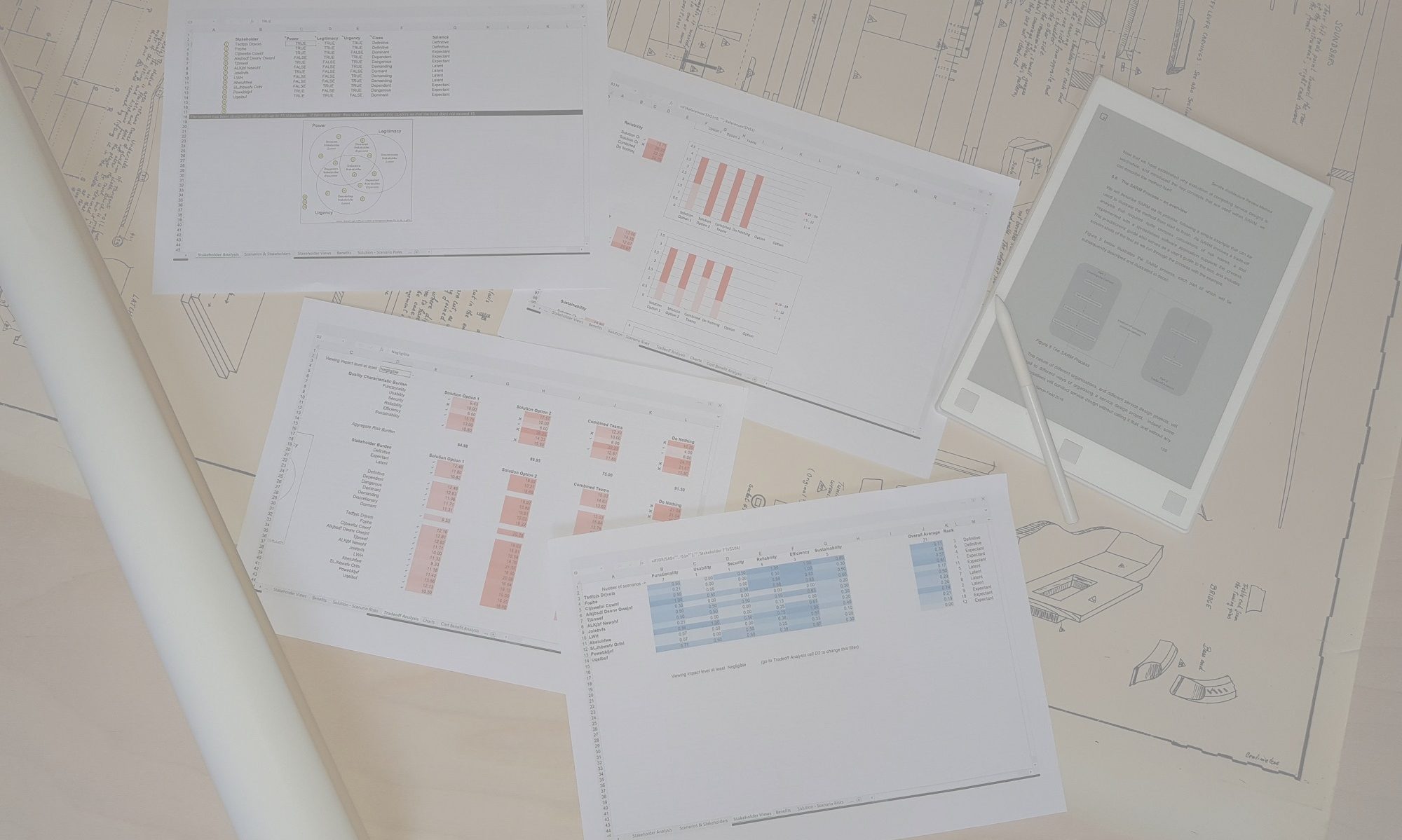This worksheet forms part of the optional cost benefit analysis activity that can complement the SARM Process. To make use of this it is first necessary to complete the ‘Benefits‘ worksheet. It is also necessary to have assessed the risk likelihood for each scenario / solution option combination by completing the information in the ‘Solution – Scenario Risks‘ worksheet.
To conduct the cost benefit analysis, the user must enter cost details for each solution option in the centre of the worksheet. Row 7 contains a column header for each solution option taken from those specified in the ‘Solution – Scenario Risks’ worksheet. Below each of these are three fields that should be used specify the cost of each solution option. The first of these in row 8 is the one-off cost for developing or implementing the solution. Below that comes the annual cost of running the system or service, and below that is a drop-down to indicate the difficulty of exiting the solution: Low, Medium or High. This has the effect of increasing the total cost (shown in row 11) by an amount that increases with the difficulty of exiting the solution. The thinking behind this is that any cost benefit analysis that compares competing solutions should take into account the cost of exiting those solutions. By default, the amount added will be 0%, 50% and 100% for Low, Medium and High difficulties respectively. These percentages can be changed in the ‘References’ worksheet.
Once the cost information has been entered for each of the solution options, the net return in money and percentage will be shown in rows 14 and 15 below each solution option. This information can now be married up with that from the trade-off analysis to help the team select the solution that will deliver a system or service that is both cost effective and architecturally satisfactory.

